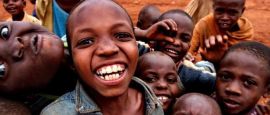After the genocide, Akagera National Park was overrun by returning refugees and much of the wildlife was wiped out. But the Rwandan government, with the help of Africa Parks, has rehomed these displaced people and begun restoring Akagera to its former glory – with lions successfully reintroduced in 2015 and rhinos in 2017. Visitors here also have the chance to spot elephants, hippos, giraffes, baboons and monkeys, and some 480 species of bird.
Rwanda things to see and do
Tourist offices
Address: KG 220 St, Kigali, Rwanda
Tel: +250 727 775 170 (or 1415 from within Rwanda).
https://www.visitrwanda.com
Once the largest city in Rwanda, Butare (also known as Huye) is considered the intellectual capital of the country, as it houses several academic institutions, including the National University of Rwanda. The most prominent tourist attraction here is the superb Ethnographic Museum, which displays a vast collection of historical, artistic and archaeological items that give visitors a deep insight into the pre-colonial lifestyles, and subsequent development of Rwanda as a modern African state.
Rwanda may be landlocked, but you can still hit the beach in Gisenyi: a pretty market town on the northern edge of Lake Kivu, right on the border with neighbouring the Democratic Republic of the Congo. As well as fine slithers of golden sand (better for lounging than swimming), the town lays claim to a large brewery, which proudly produces Rwanda's celebrated beer: Primus.
Located on the eastern shore of Lake Kivu, Kibuye is a perfect place to unwind. It's also unremittingly beautiful: steep, forested slopes rise from crystalline waters, which are dotted with canoes and fishing boats. The town itself is home to a lively market, and there is a burgeoning range of hotels and restaurants tracing the shoreline.
Safe and clean, Rwanda's capital is abuzz with bars, restaurants and hotels, all backed by a towering skyline. Some of the highlights on offer here include the vibrant Kimironko Market, selling everything from carved wooden masks to fresh bananas, and Rwanda Art Museum, displaying striking works from local and international artists. Mt Kigali, a hill on the outskirts of town, is also a worthy diversion as it offers great views over the city from its summit.
In 1994, approximately 800,000 Tutsis and scores of moderate Hutus – the two main groups in Rwanda – were murdered by Hutu extremists during the tragic Rwandan Genocide. The Kigali Genocide Memorial museum pays tribute to these victims (many of who are buried in a mass grave outside), and chronicles the events that led to the slaughter. It's a heart-breaking but important monument to a seminal moment in Rwanda's history.
Located in the mountainous region southwest of Rwanda, Nyungwe National Park covers some 1,000km² (386 sq miles) of rainforests. The park is home to a diverse array of primates, including chimpanzees, black-and-white colobus monkeys, owl-faced monkeys (with beak-like noses), blue monkeys and L'Hoest's monkeys. Many of these creatures are endangered, while L'Hoest's monkeys, recognisable by their white 'beards', are endemic to the Albertine Rift (a geographical region covering parts of Uganda, the DRC, Rwanda, Burundi and Tanzania).
Hovering a hair-raising 70m (230ft) above the forest floor, this swaying walkway offers wonderful vistas over Nyungwe National Park. The 160m-long (525ft) bridge also makes for a great vantage point to spot some of the park's 322 species of bird or 120 species of butterfly.
Founded in 2005, the Rwanda Film Festival is held each year over seven days (usually during October). Most of the screenings take place in venues around Kigali, but, as part of a drive to bring culture to the farthest corners of this country, pop-up cinemas are erected in rural Rwanda, showing everything from Hollywood blockbusters to contemporary African documentaries. It's a highlight in the country's cultural calendar.
Perhaps nobody has done more to aid the conservation – or increase our understanding – of mountain gorillas than Dian Fossey, an American zoologist who spent nearly two decades studying the primates in Rwanda. Fossey moved to Volcanoes National Park in 1967, where she spent long days in isolation studying the creatures and raising awareness about the threat of poaching, in an attempt to save the animals from extinction. She succeeded, but was murdered in the process by an unknown assailant. Her gravestone, next to the research centre she founded, has become a pilgrimage site for naturalists. Reaching it requires a 30-minute drive from the park headquarters, followed by a scenic two-hour hike through the forest. Permits and guides are required.
Gorilla trekking in Volcanoes National Park is Rwanda's most famous tourist attraction – and tops many a nature lover's bucket list. Tracking permits must be booked in advance (only 96 are issued daily) and cost US$1,500. Those lucky enough to obtain permits are split into small trekking groups, with assigned guides, and hike to one of a handful of designated forest clearings, where they spend a memorable hour observing one of the habituated gorilla families.
Do you have any Feedback about this page?
© 2025 Columbus Travel Media Ltd. All rights reserved. No part of this site may be reproduced without our written permission, click here for information on Columbus Content Solutions.








 You know where
You know where